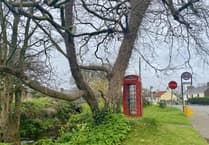Plans to treat potentially toxic waste from the former Raggatt tip in a new sewage works have been panned by a former government environmental protection officer.
Leachate, containing a range of contaminants, is taken by tanker at least once a day from the former Raggatt tip and disposed of into the sewer at Mill Road, Peel, from where it is discharged into the bay through the breakwater outfall.
Raw sewage is still being discharged into the sea in Peel.
Manx Utilities withdrew its application for a sewage works at Glenfaba in Patrick in December 2020 after a planning inspector recommended its refusal.
That application included proposals to pipe the Raggatt leachate to the new works for treatment, with the sludge eventually being incinerated.
Manx Utilities’ board agreed at its meeting last month that it will press forward with a regional approach to sewage treatment for both Peel and Garff.
The new works for Peel will have similar arrangements for dealing with the Raggatt leachate.
But Dr Calum MacNeil, who was a freshwater biologist and environmental protection officer with the DEFA until September 2017, claims proposals to treat leachate from the Raggatt tip at the new plant will not work.
The leachate contains highly toxic polychlorinated biphenyls (PCBs).
In email correspondence with a number of MHKs, Dr MacNeil insists a conventional sewage treatment plant would not treat PCBs. He said: ‘The vast majority will just pass through it to be discharged unaltered out of the other end.
‘PCBs should not be introduced into a conventional sewage treatment plant.
‘Before the island commits itself to massive capital expenditure on a new conventional sewage treatment plant, I suggest it gets itself some expert advice.’
But a spokesman for Manx Utilities said: ‘We are aware of correspondence on this matter and are considering what is meant in this context by conventional as there are a number of solutions for treating sewage which could fall into this categorisation. We are of course discussing this with our consultants.’
Dredged silt from Peel marina also contains PCBs and other potentially toxic chemicals and heavy metals from the mining industry.
There are no plans to treat the silt at the new works.
Under international law, PCBs are banned and their deliberate release into the environment is outlawed at any concentration.
Dr MacNeil believes their discharge into Peel bay is illegal.
Tynwald approved new river and bathing water qualities standards 16 months ago in a move hailed as a ’stepping stone’ to the island adopting a more recent EU directive.
The Water Pollution (Standards and Objectives) Scheme 2020 set out an EQS for PCBs of 15 nanograms/litre.
Dr MacNeil insists there is no safe level for PCBs to be deliberately discharged in effluent to rivers or marine waters.
He says the new standards may lead to the island breaking international law.
Our bathing waters previously only had to comply with 1976 European standards.
But following Tynwald’s approval of the new water pollution legislation, Manx bathing waters now have to comply with a more recent EU directive, albeit dating back to 2006.
Meanwhile, Manx Utilities says a regional approach to sewage treatment for both Peel and Garff offers the best solution in terms of cost and quality – and the project team has begun work on all the approvals required.
It says it will not release details of the preferred sites until arrangements are in place to acquire the sites needed.
Glenfaba House was bought by Manx Utilities in 2017 for £600,000 as the site for Peel’s new treatment works.
The old mansion house was demolished before the authority had even applied for planning consent for the new works.
Manx Utilities confirmed that in Garff the preferred solution is for a single treatment works to serve both Laxey and Baldrine at a location between the two villages.
‘As such there are no plans for anything other than pumping stations at either the Cairn site or on the Glen Garwick estate,’ said the spokesman.
‘Unfortunately this cannot be avoided but will have minimal impact on the surrounding areas. All of this remains subject to planning approvals.
‘We continue to work closely with representatives in both catchments and would like to thank them for their valued time to date in assisting progression of the options.’


.JPG?width=209&height=140&crop=209:145,smart&quality=75)
.jpeg?width=209&height=140&crop=209:145,smart&quality=75)

Comments
This article has no comments yet. Be the first to leave a comment.